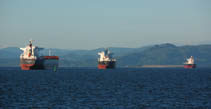Understanding the Most Common Types of Trade Conditions in Sea freight
When conducting international trade, understanding the trade conditions under which goods are shipped is crucial. The trade conditions determine how the buyer and seller settle the costs and risks associated with the shipment. Among the most commonly used trade conditions in sea freight are the Letter of Credit (L/C), Cost and Freight (CFR), and Ad Valorem Freight (AFR). These conditions are widely recognized and help ensure clarity and reduce disputes.
Letter of Credit (L/C)
The Letter of Credit is one of the most popular trade conditions in sea freight. It allows the buyer to pay the seller based on a drawn letter of credit, which is issued by a bank on the buyer's behalf. This condition is ideal for buyers who prefer to avoid directly dealing with the seller and want to streamline the payment process.
Cost and Freight (CFR)
Under the CFR condition, the seller is responsible for loading the goods onto the ship and ensuring they are properly secured. The buyer pays the seller the agreed-upon cost for the goods and the associated freight charges. This condition is commonly used in export-oriented transactions where the seller handles the logistics of shipping.
Ad Valorem Freight (AFR)
The AFR condition is based on the value of the goods. The seller calculates the freight charges by applying a percentage to the agreed value of the goods. This condition is often used when the value of the goods fluctuates, as it provides a predictable way to calculate the freight charges.
Understanding these trade conditions is essential for anyone involved in international trade. By choosing the right trade condition, businesses can ensure clarity, reduce risks, and streamline their supply chain operations. Whether you're a exporter, importer, or logistics provider, knowing how these trade conditions work will help you make informed decisions and achieve your business goals.
